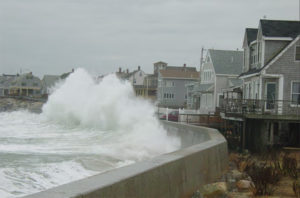 Seawalls aren’t going anywhere in Florida – except up.
Seawalls aren’t going anywhere in Florida – except up.
With thousands of miles of coastline facing two feet of sea level rise by the year 2060, cities and counties are looking for stronger, more durable and better-designed seawalls to both absorb waves and reduce damage to the adjacent sea or bay bottom.
That’s where precast concrete comes in, according to an article in the Miami Herald.
New seawalls throughout south Florida are being constructed with glass fiber reinforced polymer encased in concrete. The concrete mix is altered based on conditions to make it more durable. One change involves using saltwater, rather than fresh water. Researchers claim this will cut costs and help countries in where fresh drinking water is depleted.
Esber Andiroglu, an associate professor at the University of Miami, is among the university scientists and private companies designing new technology to improve seawall construction. By one estimate, it could cost $75 billion to raise and repair every existing wall in Florida by 2040.
“There is zero question you can use seawater in concrete,” Suraneni told the Herald.
The main issue is replacing the steel within the concrete to another material to avoid metal corrosion.